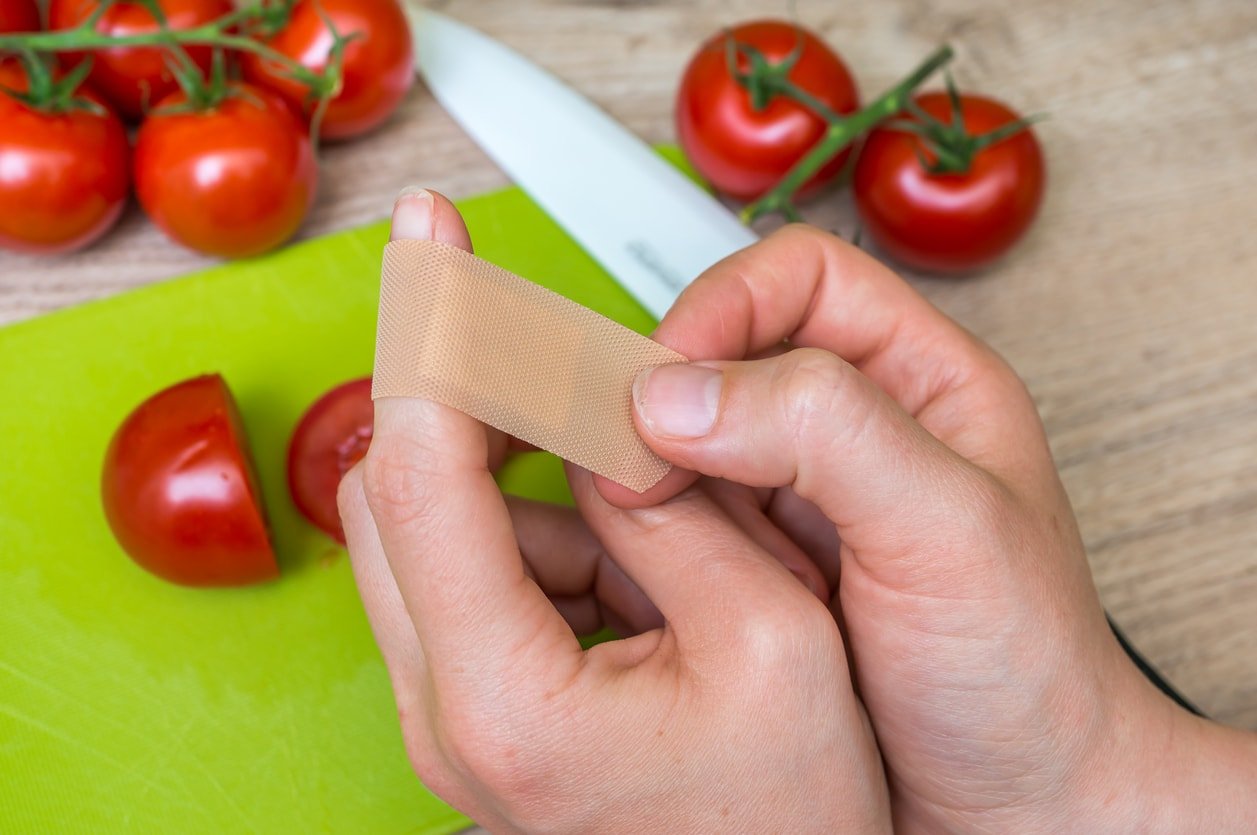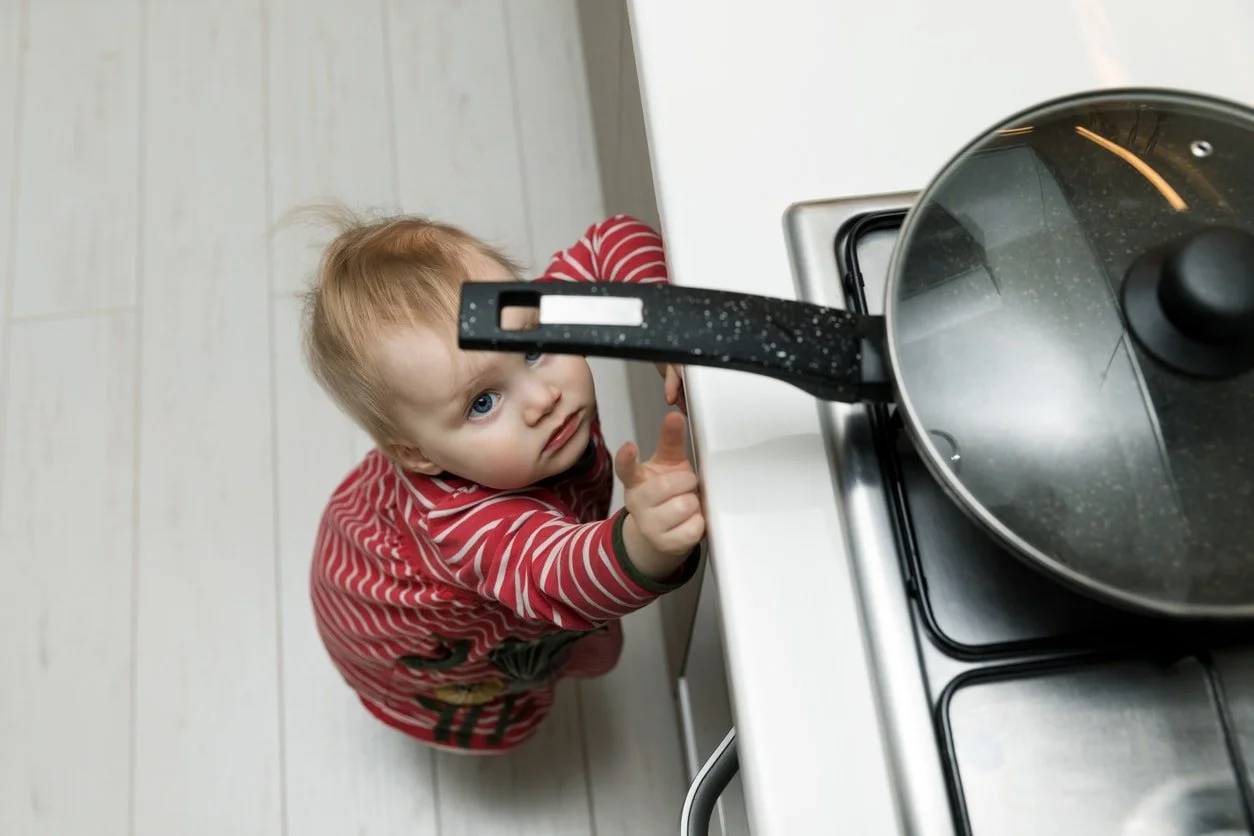Preventing and Treating Kitchen Injuries
Discover > Texas Mom Blog > Preventing and Treating Kitchen Injuries
Kitchen injuries are inconvenient to say the least, but unfortunately they're pretty much inevitable. There are a couple of things besides caution and luck that you can do to prevent these injuries, and what to do to treat them and heal up quickly. Any kitchen, professional or domestic must have a first aid kit. It really doesn't seem significant until something does happen, and proper disinfectant can be the difference between keeping a finger or not. Here is the minimum every kitchen first aid kit should have (and usually comes equipped with):
plasters in a variety of different sizes and shapes
small, medium and large sterile gauze dressings
at least 2 sterile eye dressings
triangular bandages
crêpe rolled bandages
safety pins
disposable sterile gloves
tweezers
scissors
alcohol-free cleansing wipes
sticky tape
antiseptic cream
painkillers such as paracetamol (or infant paracetamol for children), aspirin (not to be given to children under 16), or ibuprofen
eyewash and eye bath
Cuts, Chops, & Slices in the Kitchen
Cuts from kitchen equipment are naturally the most common and let's face it, we've all done it at some point. Sharp kitchen objects like knives, peelers, graters, food processors, and blenders have caused pretty grim injuries and amputations in seasoned chefs. It's important to keep all your knives super sharp so that they cut clean, not just to avoid slipping but to avoid a messy slice. An injury from a dull blade can be a lot messier and harder to stitch.
If you've knicked yourself and it's not severe the first goal is to stop the bleeding with a clean towel. Do this by just applying even pressure across the wound. When bleeding had stopped run the cut under some warm water to clean it. Use an antibiotic or antiseptic pad or creme to prevent the growth of any unwanted microorganisms. Wrap the cut with a sterile bandage.
For deeper cuts that require stitches or a trip to the emergency room, some quick clotting bandages would help keep the wound from bleeding out as well as make the drive to the hospital a lot less painful.
Watch for infection, redness, and puss are some first signs and don't require immediate medical attention. Things can quickly take a very bad turn with an infection so if you notice swelling, a red streak, fever, pain restricted movement, and feeling unwell. Sepsis, abscesses, skin infections, and in some rare cases necrotizing fasciitis, or 'flesh-eating disease'.
If you've got an exposed cut, avoid dirt, submerging in natural water sources, keep fresh bandages, refrain from picking, and just generally avoid contact with something unclean, like wild animals.
Kitchen Burns
There are a few things that can leave a nasty burn in a kitchen. The first is oil. Oil is more or less at the top of my list because it's unpredictable and how the adding of water creates a hell inferno. Oil becomes more viscous when it's hot making it easier to splash and jump around in a pan. The hottest oil you should be cooking with is 400 degrees, and at that temperature, it can cause severe third-degree burns that HURT. The second is caramel. Melted sugar is so sticky and gets stickier as it cools, so when sugar is spilled it only takes precious seconds for it to become a glue that burns and fastens itself onto your skin, which will leave a hefty scar.
Doctors classify burns in four degrees. First-, second-, third-, and fourth-degree burns. They're diagnosed depending on the damage that has been done on the skin, the first degree being the most minor. They're characterized with no more than a little red, non-blistered skin, second degree burns cause redness, blisters, and thickening of the skin, third-degree burns make widespread thickness with a white leathery appearance. Contrary to what you may think, third-degree burns can hurt significantly less than others due to irreversible nerve damage. Fourth-degree burns include all third-degree burns that extend beyond the skin and into bone and tendon.
Treating Kitchen and Minor Burns
Although kitchen burns are hardly the worst cause of burns they can be serious enough to require medical attention and leave severe scarring. Should you burn yourself it's important to very quickly run it under cold water. Under no circumstance should you use ice to relieve a burn? Ice slows the healing process and can even cause frostbite to an already damaged area of the skin.
To treat a burn at home run it under cold water immediately then remove any jewelry you have around the affected area. If you have some burn cream on hand, apply it immediately after washing the burn to prevent further inflammation. Depending on the severity of the burn blisters could form quite quickly, don't pop them because they protect the inside from infection. After that apply lotion with aloe vera, this will prevent dryness and promote healing, then lastly just wrap it with a sterile gauze bandage (not fluffy cotton). Wrap it loosely to avoid putting pressure on burned skin. Bandaging keeps air off the area, reduces pain, and protects blistered skin. Burns can be extremely painful so take a pain reliever if you have to.
Preventing these 2 very common kitchen injuries is key. Follow some obvious guidelines like cleaning spilled liquids, keeping pot and panhandles over the stove, always closing the oven fully, use sharp equipment, etc. Also keeping your distractions to a low help. Multi-tasking, while you cook, is risky and makes it difficult to focus on temperatures and timing. Always use oven mitts when handling hot dishes or tongs when handling hot food.
Children in the Kitchen
It goes without saying children are extra susceptible to kitchen injuries. Even more so considering they can't read any labels on toxic cleaners or feel the edge on a razor-sharp knife. As a child I certainly burnt myself a few times (despite my mother telling me not to touch), so look out for the little ones, they're far more daring and trusting than us. Lock up your toxic cleaners, store your knives high up, keep pot and panhandles from hanging over the stove, and just keep them away from the kitchen unsupervised.






